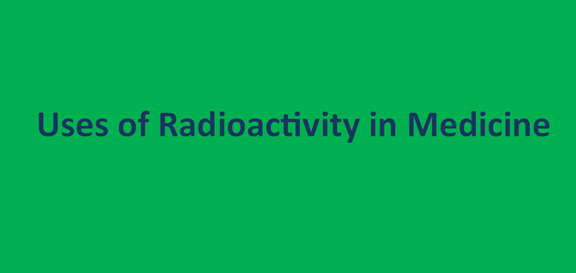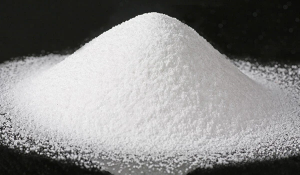Nuclear physics has become an integral part of life. One of the most recognizable forms of nuclear physic is radiology. Radioisotopes have found multiple uses in diagnosis and therapy. As a result, this has paved the way for the development of nuclear medicine. However, radioisotopes have proven to be useful in diagnostic procedures involving tracers. Radioisotopes are chemically similar to stable isotopes consisting of the same elements. Besides, they can easily be traced even in small quantities because of their radioactivity. Hospitals and radiology centers usually perform 10 million nuclear medicine procedures in the United States alone. As a result, this form of energy has proven to be useful and competent in diagnosing and treating patients suffering from complicated diseases.
1. Radioactivity in X-Rays
X-rays are a particular type of radiation that passes through the human skin. In modern medicine, it is a standard medical procedure to perform an x-ray. An x-ray casts an image of the bone and other internal structures because of their higher density levels when compared to the skin. Shadows, usually black and white, are generally detected and cast on by the photographic film. It can be compared to placing a pencil and paper together, then holding a light in front of the paper. However, the difference is that the radiological rays of the machine are invisible; hence, the need for a photographic film to cast the projections for us. The use of this mechanism has allowed doctors, dentists, and other medical practitioners to detect internal problems that would have been rather hard to see just by using the naked eye.
Doctors, dentists, and hospitals use several nuclear materials and procedures to diagnose, treat, and monitor a wide array of internal processes and other medical conditions in humans. Diagnostic x rays are one everyday use of radiology in medicine. It is useful and prevalent among people who practice medicine. According to a survey conducted by the FDA, nearly 7 out of every 10 Americans have received therapy as a result of x-ray diagnosis. It is clear from this statistic that radiology concerning the x-ray machines has saved numerous lives through detecting severe conditions such as bone cancer and hyperthyroidism.
2. Therapeutic uses of X-rays
Radioactivity from the x-ray and other radiation forms have several therapeutic applications. If they are used this way, the radioactive rays are used to kill cancerous tissue or reduce the size of a tumor in the brain or body. Additionally, therapeutic forms of radioactivity can be used to reduce the pain that usually stigmatizes the patients. An excellent example of therapeutic radiological use is radioactive iodine, specifically iodine-131, which is commonly used in the treatment of thyroid cancer. According to research, this form of aggressive cancer claims the lives of approximately 11,000 Americans every year.
Linear accelerators, also known as LINAC, are examples of therapeutically uses of radiation. A LINAC machine is a large machine that discharges high-energy rays and electron beams. It is the most common machine that is used in radiation oncology, particularly for cancer treatment. It is used in such a way that the energy is channeled to the location of cancer or tumor. The electronic beams then dispel the cancerous cells and tumors while sparing healthy functioning tissues. This form of radiation treatment has proven to be effective in eliminating cancerous cells in the body.
3. Forms or Radiation can be used to Detect Tumors in Body Parts
There are specialized x-ray machines that are used in detecting unusual growth in the body. To do this, the doctors first hook the x-ray machines to specialized computers known as computerized axial tomography (CAT) or CT (Computer tomography) scanners. These machines are useful in scanning body organs. They are different from x-ray canners because they show scans in color. A CT scan is used to diagnose and screen the brain for tumors or cancerous cells. This form of radiation has proved to be highly successful, mainly in delicate organs such as the brain and the heart.
Medical practitioners use these specialized radiation machines to locate and identify animalities such as tumors, unhealthy organs, and cancerous cells inside the body. A procedure such as this one requires a doctor to administer a radioactive substance that is drawn to specific body organs, including the liver, kidney, pancreases, and brain. Hence, they can observe the radioactive material in the body and draw a clinical diagnosis in the process.
4. Radioactivity in Research and Health Implications
Universities, colleges, high schools, other academic and health institutions use radioactive materials in the course of their work. Most educational institutions in America have a laboratory that can be used to carry out experimental research and health implications. Other than learning about radioactive substances in these facilities, students have made a career in medicine, as a result of the study of radioactivity. Some of the significant health findings have come from universities, colleges, and other academic institutions.
5. Breast cancer screening using a Mammograph
Researchers also use Doctors to use radioactive substances to label substances that pass inside the bodies of people and animals. In the same way, researchers in the field of medicine use radioactive materials to research and study how our bodies work in the laboratories in the institutions above. Applications of radioactive materials have been used by research officers in medical fields to understand cancerous cells better. As a result, treatment options have been developed from research, saving numerous lives in the process.
One excellent example of radioactive materials used in screening for cancer is the mammograph. A mammography is an x-ray imaging mechanism that is used to examine the breast to detect cancer and other diseases early. Medical doctors and other practitioners use a mammography as a diagnostic and screening tool. A mammography is usually done on a patient’s breast while lying flat on a supporting plate. An x-ray machine then produces small bursts of x-rays that are invisible but pass through the chest to a detector that is placed on the opposite side. The sensor is usually a photographic film plate, but sometimes it is an electrical transistor that transmits signals to a computer to conjure a digital image. The images formed are called mammographs.
On the mammograph, areas that are of low density, such as fat, will appear translucent. Denser tissues including connective and glandular tissue or tumors will be darker than fat cells and will seem whiter on a gray background. The mammograph also utilizes the ionizing radiation that x-rays do. Without this mechanism, it would have been very challenging for women to be accurately diagnosed with breast cancer. As a result, governments and health organizations recommend frequent screening to detect cancer early and start treatment, to reduce the chances of death. Hence, radiation has brought forth significant strides in the diagnosis of such diseases.
6. Radioactive Substances used in the Research of Pollution and Health Hazards
Radioactive materials have also enabled researchers to examine the ecology and the health hazards that pollution possesses to living organisms. Such mechanisms have paved the way for researches to explore the air, water, and soil pollution and the adverse effects they have on our bodies. Scientists label substances that pass-through plants, animals, and other living organisms through the use of radioactive materials. Information obtained from such research studies has helped us understand the air, water, soil, plants, animals and other living organisms and how they are related. Besides, we would not have understood how the pollution of plastic and other dangerous materials work. Additionally, research using low-energy radioactive sources has enabled medical practitioners to identify the components that cause diseases from pollutants such as cigar rete smoking in medical fields.
Information from radioactive research studies has helped human beings do agriculture better intending to produce healthy food for consumption. Many diseases can be avoided by taking proper care of our bodies by eating well. Healthy foods not only give us energy but build our immune systems to help us fight bacteria and viruses, causing diseases. Research using radioactive materials has enabled farmers to manipulate the soil and their plants to effectively churn out healthy crops that are beneficial to humans.
7. Archaeological Discoveries and their Link to Medicine
Radioactive substances are used to determine the age of fossils, dead animals, and people. The process is called carbon dating. For instance, in the top parts of our atmosphere, cosmic rays hit nitrogen atoms to form a naturally radioactive isotope known as carbon-14. Carbon is present in all living things. However, there are also small traces of carbon 14 in all living organisms. When a living organism dies, it can no longer absorb carbon.
Nonetheless, carbon 14 that was accumulated throughout the organism’s life remains in the body as it starts to decay. Such mechanisms are used by people in the medical field to accurately deduce the death of a person regardless of the timespan. To a more significant extent, medical practitioners use this to estimate the lifespan of people at different times and how to increase the former’s longevity.



